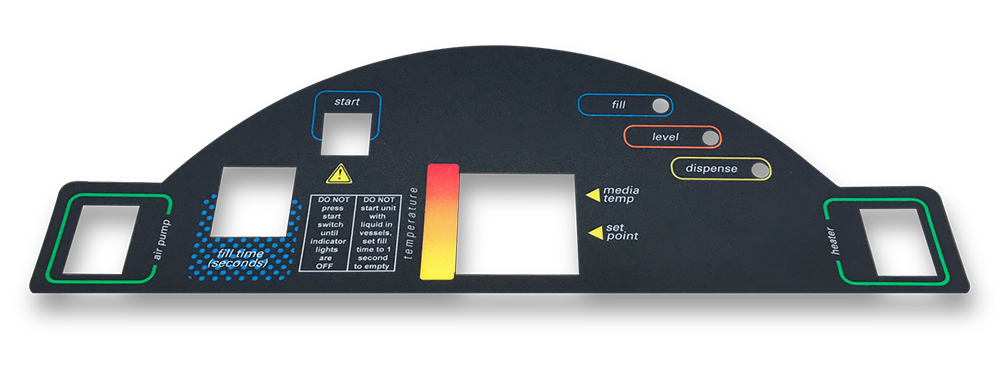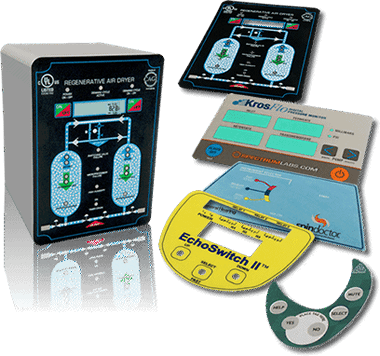The Comparison Between Standard and Long-Lasting Graphic Overlays
The Comparison Between Standard and Long-Lasting Graphic Overlays
Blog Article
Recognizing Exactly How Graphic Overlays Work to Improve Your Creative Tasks
Graphic overlays function as an essential component in the world of creative projects, enhancing both visual interaction and target market engagement. By understanding their performance and possible applications, one can effectively boost not only the aesthetic appeal yet likewise the clarity of complicated information. The effective integration of these overlays needs mindful consideration of layout principles and goals. As we discover the various kinds and best methods, it becomes apparent that the appropriate technique can substantially affect project results, leaving us to contemplate how to harness these tools for optimal influence.
What Are Graphic Overlays?
Graphic overlays are aesthetic elements that are positioned on top of a base photo or user interface to boost interaction and customer experience. They serve various functions, consisting of supplying added information, directing individual interaction, and enhancing aesthetic charm. Typical applications of visuals overlays can be discovered in electronic interfaces, marketing, and instructional products.

Graphic overlays are usually created using layout software program, enabling designers to control openness, size, and shade to accomplish the preferred impact. They can be fixed or dynamic, with animations that draw the customer's eye and enhance involvement. The strategic usage of visuals overlays not only enhances aesthetic pecking order but also help in supplying a systematic and clear message. Comprehending just how to successfully execute graphic overlays is critical for designers aiming to raise their creative jobs.

Advantages of Making Use Of Graphic Overlays
Making use of visuals overlays can considerably enhance the effectiveness of aesthetic communication across numerous tools. One of the primary advantages is the capability to share intricate info succinctly. By layering graphics, text, and photos, overlays help with the discussion of information in an extra absorbable layout, making it less complicated for audiences to understand vital ideas promptly.
Moreover, graphic overlays can boost aesthetic appeal, accentuating certain aspects within a design. This is specifically helpful in marketing and marketing, where capturing the viewer's rate of interest is critical. The strategic use colors, shapes, and typography in overlays can produce a cohesive and appealing visual narrative, enhancing brand name acknowledgment.
In addition, visuals overlays offer adaptability in design. They enable makers to adjust material for various systems without going back to square one, ensuring uniformity across different networks. This adaptability is critical in today's digital landscape, where web content should be maximized for varied devices and formats.
Kinds Of Graphic Overlays
When thinking about the numerous kinds of graphic overlays, it is vital to identify their diverse applications throughout various sectors. Graphic overlays can be categorized primarily into three types: practical, ornamental, and informative.
Useful overlays are designed to boost the usability of a product. Frequently found in digital tools, these overlays typically supply responsive responses through increased buttons or textured surface areas, improving individual communication. They can likewise offer as a safety layer, securing the underlying components from deterioration.
Ornamental overlays concentrate on aesthetic enhancement, permitting brands to reveal their identity through vibrant layouts and personalized graphics. These overlays are common in packaging, marketing, and point-of-sale materials, where aesthetic charm is vital for attracting customers.
Educational overlays, on the various other hand, are utilized to convey essential information or directions. They can be seen in applications such as signs, customer handbooks, and instructional graphics, where clarity and readability are extremely important.
Each kind of visuals overlay serves a distinct function, adding to the general efficiency of innovative jobs while dealing with details requirements within various sectors. Comprehending these distinctions is essential for selecting the right overlay for your job.
Finest Practices for Application
To make sure the effective implementation of graphic overlays, it is essential to develop a clear understanding of the task's purposes and the specific requirements of the end-users. Begin by conducting comprehensive research study to determine the target market and their choices, as this will certainly educate design options and performance.
Next, produce an in-depth strategy that lays out the overlay's purpose, integration, and format procedure. This plan should consist of interface considerations, making sure that overlays improve as opposed to block the individual experience - Graphic Overlays. Think about the visual power structure and keep uniformity in style elements, such as shade schemes, symbols, and font styles, to advertise brand name coherence
Testing is important; collect feedback from a representative sample of customers to determine potential concerns and areas for renovation. Iterate on the layout based on customer input and performance data. In addition, make sure compatibility across different tools and platforms to optimize accessibility.
Devices for Creating Overlays
Developing effective graphic overlays calls for the right tools to translate style principles into functional applications. Different software program and platforms are readily available, each customized to particular requirements and ability degrees.
Adobe Photoshop and Illustrator are sector requirements, using extensive capabilities for producing and controling overlays. These devices supply advanced functions such as layer monitoring, mixing settings, and vector graphics, allowing developers to create detailed and top notch overlays.
For those seeking a much more easy to use technique, Canva and Figma are superb alternatives (Graphic Overlays). Canva's intuitive interface allows customers to develop overlays quickly using pre-designed templates, while Figma helps with collective design in real-time, making it ideal for teams
Additionally, additional hints open-source options like GIMP and read Inkscape provide durable capabilities without the linked expenses of exclusive software application. These devices enable for versatility in design and can accommodate various documents styles, making sure compatibility across various systems.

Conclusion
In conclusion, graphic overlays serve as effective tools for improving imaginative jobs by giving aesthetic clearness, visual appeal, and brand uniformity. By recognizing the fundamental concepts and benefits associated with visuals overlays, makers can substantially boost the top quality and efficiency of their aesthetic interactions.
Graphic overlays offer as a pivotal element in the realm of innovative tasks, boosting both visual communication and audience engagement.Graphic overlays are usually created utilizing style software program, allowing designers to manipulate color, openness, and size to achieve the desired result.Furthermore, graphic overlays can improve visual charm, drawing attention to specific elements within a design.Additionally, visuals overlays provide adaptability in Read Full Article layout.In verdict, visuals overlays offer as powerful tools for boosting imaginative jobs by supplying visual clarity, visual allure, and brand consistency.
Report this page